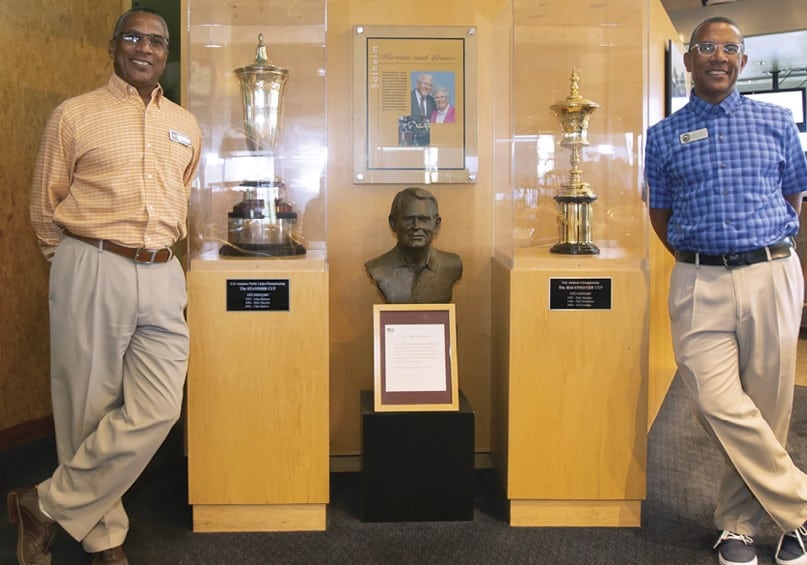Henry DeLozier highlights three important points for club leaders to ramp up club operations and refine their game plan.
When asked what steps they are taking to prepare their business for the post-COVID-19 environment, many small- and medium-sized business owners and managers say they’re taking a “wait-and-see” approach. While that attitude is understandable, with conditions and health and safety guidelines changing by the day, it’s also not advisable.
The more effective strategy is the one that many other businesses are taking to navigate the crisis in creative and productive ways: Anticipating and preparing for a post-COVID-19 business, whenever that may come and whatever it might resemble.
In a wide range of businesses, preemptive leaders are driving revenue through new marketing tactics and sales channels, putting new incentives in place to spur immediate purchasing and capture pent-up demand, moving more of their in-person interactions online, pivoting their business to address new needs and developing new products to position their business when customer demand returns to normal.
Others are enhancing their digital presence by sprucing up their website with new content or fixing online issues for a better customer experience. And many businesses are strategizing by mapping out potential scenarios for the future.
Three important points to consider when ramping up club operations:
1. Update the club’s financial plan.
The business interruption and financial impacts will be profound and may even threaten the club’s existence. The board must reset the club’s financial plan by evaluating the current in-flow of dues revenue and the realistic projection of pending banquet and catering activity. Refer to the club’s historic reference points for revenue as the key component in ramping up successfully. Balance revenue projections with the probable attrition rate caused by members who will leave the club for health and financial reasons.
Look realistically at the club’s expenses and prepare yourself – they will be discouraging. Plan to restart programs and services in a phased manner that focuses on the most popular and engaging programs in the eyes of your members.
It’s important to remember that members may have different priorities in a post-recession world. Knowing what those are through surveys and focus groups is far more advisable than assuming the old normal is also the new normal. Keep in mind that the club may not be able to restart at a level and pace that meets members’ expectations without what may be significant investments.
In a financial sense, the club is starting over financially. This can be good for clubs overloaded with expensive debt since it gives them incentive to renegotiate their debt structure. Interest rates are at historic lows and will remain so for some time. This makes it a good time to restructure the club’s financial plan to remove historic flaws, such as membership-optional communities and outdated governance practices.
2. Strengthen your team.
Every club in your area is being affected differently by the pandemic. Some will retain staff with little change. Others will be forced to reduce operations, programs and staff. Some of your own employees will decide not to return or may be unavailable. Be prepared and recruit aggressively to fill and strengthen key positions on your team. It’s also a good time to review and update personnel records, roles and benefits.
3. Introduce new social programs.
As leaders hit the reset button, remember that private clubs enjoy an emotional relationship with their members far more than a transactional one. When evaluating and creating programs, consider the following:
Members will want to see one another and be seen. There will be a great opportunity for friends to be reunited and reminded that their club is a safe haven for their families and friends.
Look at events that are either successive – where one event sets the stage for the next – or part of a series of similar events. Give members the sense of ongoing relationships rather than one-off types of events.
Host member information exchanges. As members anticipate their clubs reopening, they will have lots of questions, which can be boiled down to “What’s changed – and what hasn’t?” Assemble a team of staff members who constitute the Answers Team.
Get ahead of questions by anticipating as many as you can and communicating the answers widely through email, newsletters and social media.
Creating a Reliable Game Plan
The most effective transitional leaders will be those who can manage information aggressively. Keep your stakeholder groups of members, employees, suppliers, and extended business partners – like bankers and insurance carriers – well-informed.
Your members and stakeholders want information, to be sure. Even more importantly, they want confidence that their club is in steady hands. They want to see evidence – action more so than talk – that the club is taking measured steps and addressing the key strategic issues without distraction with petty short-term matters. This capability requires a reliable game plan.
In May, GGA Partners conducted a series of weekly webinars to help club leaders construct their game plan and illustrate the thought processes that go into reopening and operating again in the wake of COVID-19. The sessions offered a deeper look into these three important points and tactics to prepare for a post-pandemic business environment.
The archive of each webinar and accompanying slide deck (if applicable) are available on CMAA University, complimentary to all CMAA members. Once you are signed in to CMAA University, you can find the recording and accompanying resources under CMAA Member Education, COVID-19 Resources. The content is then organized by topic area, see below for where each of the four webinars are housed:
Crisis Management and Communications
Changing Communications for Changing Times – Linda Dillenbeck & Bennett DeLozier – May 27, 2020
Member Surveys in Uncertain Times – Michael Gregory & Ben Hopkinson – May 20, 2020
Reopening Your Club
Transitional Leadership: Restarting Your Club – Henry DeLozier – May 6, 2020
If you don’t know your login information, please contact CMAA through this online form.
This article also featured in Golf Course Industry magazine.












